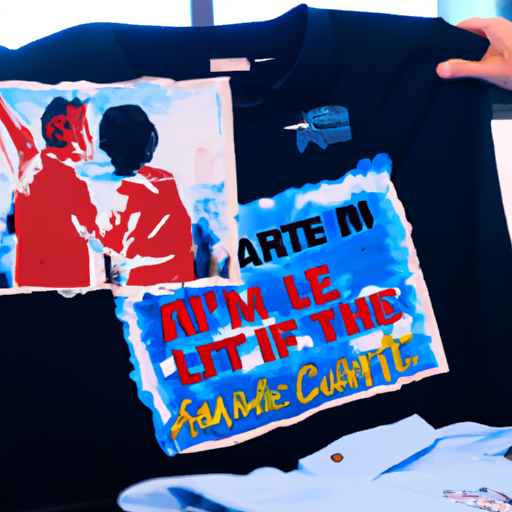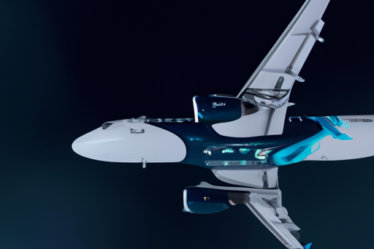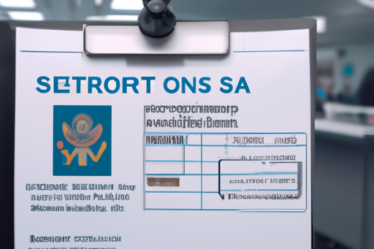
The Impact of Labor Disputes on Airline Operations
T-Shirt Battle Erupts Between American Airlines Flight Attendant Union and Management
Labor disputes are not uncommon in the airline industry, but a recent t-shirt battle between the American Airlines flight attendant union and management has taken the conflict to a whole new level. The dispute, which centers around the wearing of union-branded t-shirts by flight attendants, has highlighted the impact that labor disputes can have on airline operations.
At the heart of the issue is the flight attendant union’s desire to wear t-shirts that display their union logo and message. The union argues that this is a form of free speech and a way for flight attendants to show their solidarity and support for their union. However, American Airlines management has taken a different stance, claiming that the t-shirts violate the company’s uniform policy and could potentially disrupt the airline’s operations.
The clash between the flight attendant union and management has resulted in a heated debate over the rights of employees and the authority of management. Both sides have valid arguments, but the question remains: what impact does this dispute have on airline operations?
First and foremost, the t-shirt battle has created a sense of tension and division among flight attendants. Those who support the union’s position feel that their rights are being infringed upon, while others who side with management worry about the potential consequences of defying company policies. This division can lead to a decrease in morale and teamwork among flight attendants, which can ultimately impact the overall customer experience.
Furthermore, the dispute has the potential to disrupt the airline’s operations. If flight attendants choose to wear the union-branded t-shirts despite management’s objections, it could lead to disciplinary action or even suspensions. This, in turn, could result in a shortage of flight attendants, leading to flight delays or cancellations. Passengers may be inconvenienced and frustrated, and the airline’s reputation could suffer as a result.
In addition to the immediate impact on operations, labor disputes can also have long-term consequences for airlines. The negative publicity generated by the t-shirt battle could deter potential customers from choosing American Airlines for their travel needs. In an industry where competition is fierce, maintaining a positive public image is crucial. If customers perceive the airline as being embroiled in labor disputes and unable to provide a seamless travel experience, they may opt for a competitor instead.
Labor disputes can also strain the relationship between employees and management, leading to a breakdown in communication and trust. This can make it difficult for the airline to implement necessary changes or improvements, hindering its ability to adapt to an ever-changing industry. In the long run, this can have a detrimental effect on the airline’s competitiveness and profitability.
In conclusion, the t-shirt battle between the American Airlines flight attendant union and management highlights the impact that labor disputes can have on airline operations. From creating tension and division among employees to potentially disrupting flights and damaging the airline’s reputation, these disputes can have far-reaching consequences. It is essential for both sides to find a resolution that respects the rights of employees while also ensuring the smooth functioning of the airline. Only through open dialogue and compromise can a harmonious working relationship be achieved, benefiting both the employees and the airline as a whole.
Analyzing the Role of Unions in the Aviation Industry

T-Shirt Battle Erupts Between American Airlines Flight Attendant Union and Management
The aviation industry has long been a battleground for labor disputes, and the latest clash between the American Airlines flight attendant union and management is no exception. This time, the controversy revolves around the wearing of t-shirts by flight attendants that display a message of solidarity with their union. While it may seem like a simple matter of personal expression, the issue raises important questions about the role of unions in the aviation industry.
Unions have played a crucial role in the aviation industry, advocating for better working conditions, fair wages, and improved benefits for flight attendants and other airline employees. They have been instrumental in negotiating collective bargaining agreements that protect the rights of workers and ensure their voices are heard. However, the recent t-shirt dispute highlights the challenges that unions face in maintaining their influence and relevance in an ever-changing industry.
The flight attendant union argues that the t-shirts are a form of protected speech and a way for its members to show their support for the union’s goals. They believe that wearing these shirts helps to build solidarity among flight attendants and sends a powerful message to management about their commitment to their cause. However, American Airlines management sees it differently, claiming that the t-shirts violate the company’s uniform policy and could potentially disrupt the professional image of the airline.
This clash between the flight attendant union and management raises broader questions about the balance of power in the aviation industry. Unions have historically been a force for positive change, fighting for fair treatment and improved working conditions. However, as the industry becomes more competitive and airlines face increasing financial pressures, management is often forced to make difficult decisions that may not align with the union’s goals.
In recent years, the aviation industry has seen a rise in low-cost carriers and increased competition, leading to cost-cutting measures and a focus on efficiency. This has put pressure on unions to adapt to the changing landscape and find new ways to advocate for their members. The t-shirt dispute is just one example of how unions are grappling with these challenges and trying to maintain their relevance in an industry that is constantly evolving.
While the flight attendant union argues that the t-shirts are a form of protected speech, it is important to consider the potential impact on the airline’s brand and image. Airlines rely heavily on their reputation and customer perception, and any disruption to the professional image of flight attendants could have negative consequences for the company. This puts management in a difficult position, as they must balance the rights of their employees with the need to maintain a strong brand.
Ultimately, the t-shirt battle between the flight attendant union and American Airlines management highlights the ongoing struggle between labor and management in the aviation industry. Unions play a vital role in advocating for the rights of workers, but they must also adapt to the changing dynamics of the industry. As the aviation industry continues to evolve, it is crucial for both sides to find common ground and work together to ensure a fair and prosperous future for all.
Exploring Strategies for Resolving Conflicts between Labor and Management in Airlines
T-Shirt Battle Erupts Between American Airlines Flight Attendant Union and Management
In the world of labor and management, conflicts are bound to arise. Airlines, in particular, have seen their fair share of disputes between employees and management. One recent conflict that has caught the attention of many is the T-shirt battle between the American Airlines flight attendant union and management. This clash highlights the need for effective strategies to resolve conflicts in the airline industry.
The conflict began when the Association of Professional Flight Attendants (APFA), the union representing American Airlines flight attendants, introduced a new T-shirt design. The design featured the words “More Than Just a Pretty Face” along with an image of a flight attendant. The union intended for the T-shirts to be worn by flight attendants as a way to express their pride in their profession and to raise awareness about the challenges they face.
However, American Airlines management was not pleased with the T-shirt design. They argued that the slogan was offensive and demeaning to flight attendants. They believed that it perpetuated stereotypes and undermined the professionalism of their employees. As a result, the airline banned the wearing of the T-shirts by flight attendants.
This ban sparked outrage among flight attendants and their union. They saw it as an infringement on their freedom of expression and a disregard for their concerns. The conflict quickly escalated, with flight attendants wearing the banned T-shirts in protest and management threatening disciplinary action.
In order to resolve this conflict, it is important for both sides to engage in open and honest communication. This means listening to each other’s concerns and finding common ground. It may be helpful for the union and management to hold meetings or negotiations to discuss the issue and explore possible solutions.
Another strategy that could be effective in resolving this conflict is mediation. A neutral third party could be brought in to facilitate discussions between the union and management. This mediator would help to ensure that both sides are heard and that a fair resolution is reached.
Additionally, compromise may be necessary in order to find a resolution that satisfies both the flight attendants and management. This could involve modifying the T-shirt design to address the concerns raised by management while still allowing flight attendants to express their pride in their profession.
Ultimately, the goal should be to find a solution that respects the rights and concerns of both flight attendants and management. This may require a willingness to see the issue from the other side’s perspective and a commitment to finding a mutually beneficial resolution.
Conflicts between labor and management are not uncommon in the airline industry. However, it is important for both sides to approach these conflicts with a willingness to listen, communicate, and find common ground. By employing strategies such as open communication, mediation, and compromise, conflicts can be resolved in a way that promotes a positive working relationship between employees and management.
In the case of the T-shirt battle between the American Airlines flight attendant union and management, finding a resolution that satisfies both sides will be crucial. It is only through effective conflict resolution strategies that the airline industry can continue to thrive and provide a positive working environment for all employees.


